
Finally, thank you to @mfwhite2.bsky.social for the wonderful summary of these stories! www.nature.com/articles/d41...
03.10.2025 16:11 — 👍 6 🔁 0 💬 1 📌 0@aesully98.bsky.social
🦬 // PhD candidate in the Aaron Whiteley Lab at CU Boulder. she/her

Finally, thank you to @mfwhite2.bsky.social for the wonderful summary of these stories! www.nature.com/articles/d41...
03.10.2025 16:11 — 👍 6 🔁 0 💬 1 📌 0
Congrats as well to @erinedoherty.bsky.social and @benadler.bsky.social et al. in the @doudna-lab.bsky.social lab for their excellent complementary work on Panoptes! www.nature.com/articles/s41...
03.10.2025 16:11 — 👍 5 🔁 0 💬 1 📌 0Huge shoutout and thanks to my lab mates in the @aaronwhiteley.bsky.social lab and our collaborators in the @benmorehouse.bsky.social lab. This work would not have been possible without you all! 🫶🏻
03.10.2025 16:11 — 👍 3 🔁 0 💬 1 📌 0
A little late to the Panoptes party, but I’m delighted to share that our paper is published! 👁️ www.nature.com/articles/s41...
03.10.2025 16:11 — 👍 26 🔁 8 💬 1 📌 0My pleasure @erinedoherty.bsky.social and @benmorehouse.bsky.social - for me this was the stand-out discovery of the last year in the field
02.10.2025 07:06 — 👍 24 🔁 7 💬 0 📌 0
Very excited to see our work appear alongside findings from @aaronwhiteley.bsky.social & @benmorehouse.bsky.social !
www.nature.com/articles/s41...

Now online at @nature.com we show how the Panoptes defense system protects against viruses that attempt immune evasion - and expands our understanding of the role of oligonucleotides in immunity.
Check out this work co-led with @benadler.bsky.social here:
www.nature.com/articles/s41...
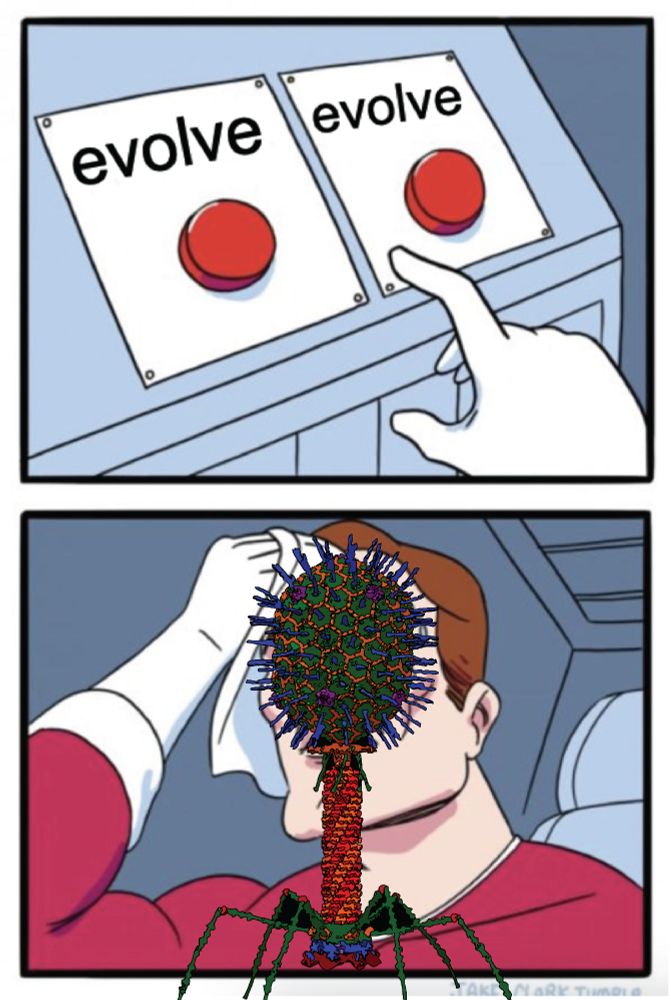
Thank you to everyone who helped make this story happen!
Obligatory meme to summarize:
“How I imagine phage facing CBASS and mCpol”

Our sister-story from our friends @aesully98.bsky.social , @benmorehouse.bsky.social and @aaronwhiteley.bsky.social is out today as well! Congratulations!!
www.nature.com/articles/s41...
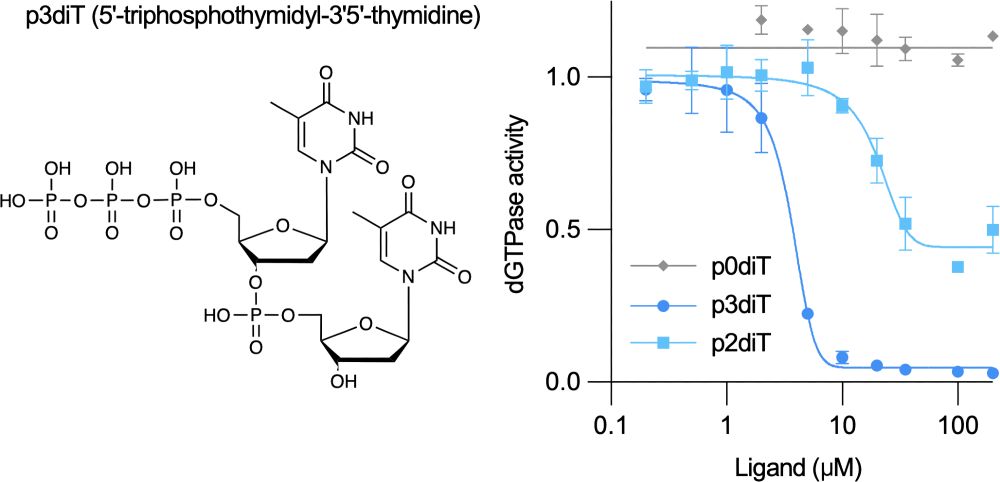
A new preprint led by Sonomi Yamaguchi in our lab describes a bacterial anti-phage defense system named Clover that uses nucleotide signals to both activate and inhibit host immunity.
www.biorxiv.org/content/10.1...
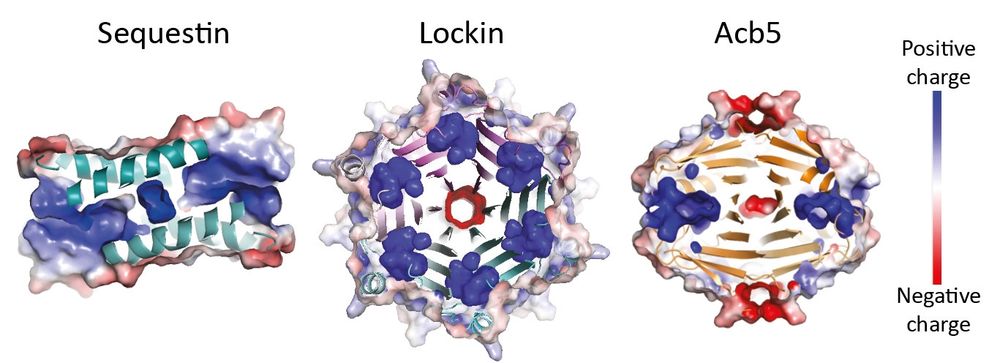
Preprint: “Structural modeling reveals viral proteins that manipulate host immune signaling”
Using AI-guided structural modeling, we find new families of viral proteins that sequester or cleave host immune signaling molecules
Congrats Nitzan Tal!
www.biorxiv.org/content/10.1...
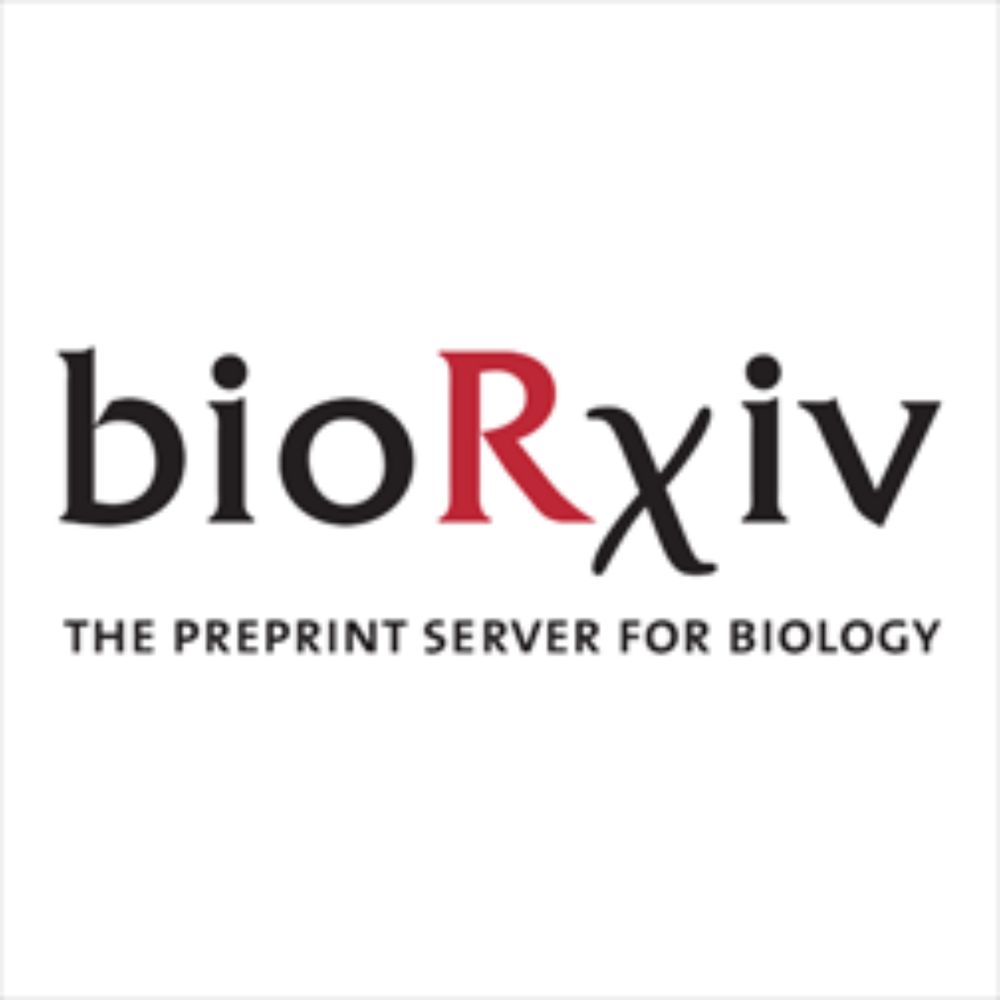
I am delighted to share that my work in the @aaronwhiteley.bsky.social lab is now on bioRxiv! We used a large-scale genetic screen to begin defining the vast landscape of phage proteins that trigger immune signaling in bacteria.
www.biorxiv.org/content/10.1...
Excited to share that my work in the @aaronwhiteley.bsky.social lab describing chaperone-mediated phage sensing by a bacterial NLR-related protein is out in @plosbiology.org!
04.06.2025 13:45 — 👍 54 🔁 20 💬 1 📌 2CBASS, CRISPR, and mCpol- oh my! What a satisfying collaboration with @aaronwhiteley.bsky.social 's lab- we uncovered a new cyclic dinucleotide signaling pathway, but it doesn't work how you'd expect! Check out the thread from @aesully98.bsky.social for an overview of the most important findings!
31.03.2025 22:05 — 👍 33 🔁 14 💬 0 📌 0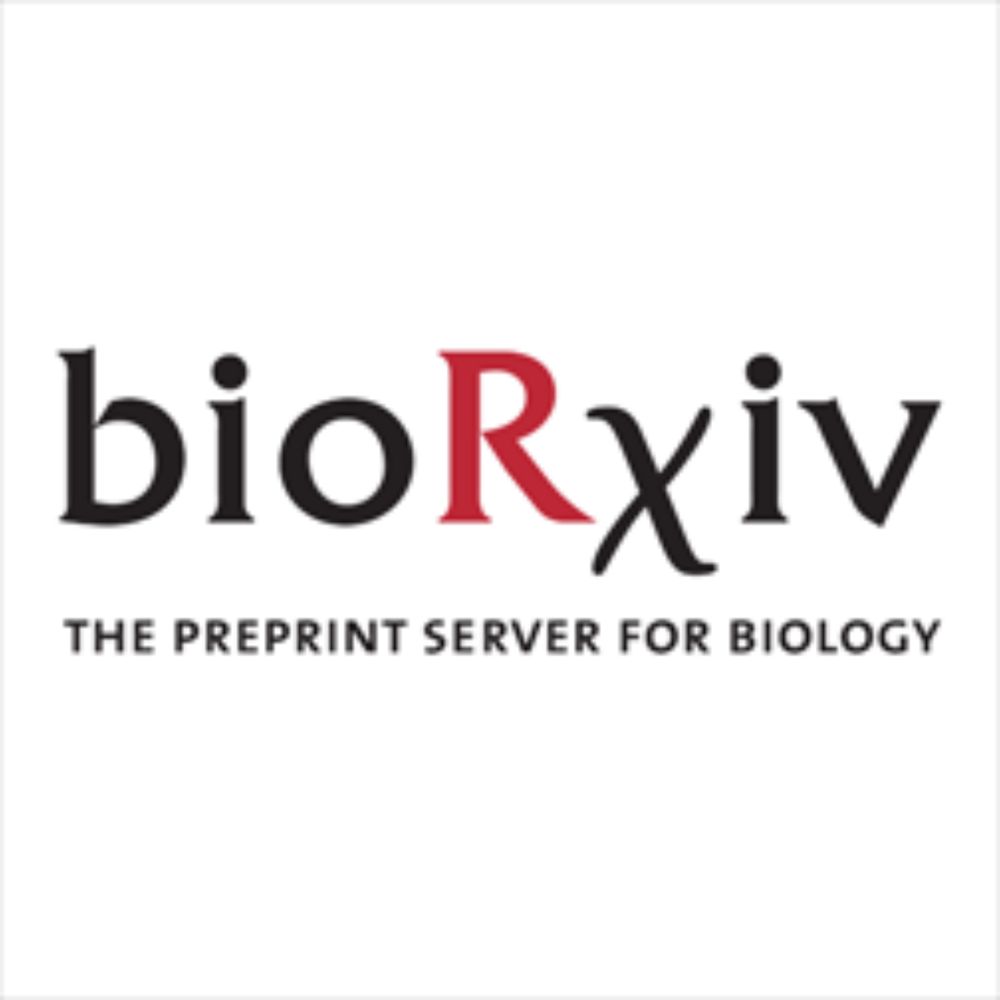
Also—check out the complementary work led by @erinedoherty.bsky.social and @benadler.bsky.social in @doudna-lab.bsky.social lab that just went up on bioRxiv!
31.03.2025 22:00 — 👍 5 🔁 0 💬 0 📌 0Huge shout-out to all of the authors from the @aaronwhiteley.bsky.social and @benmorehouse.bsky.social labs that were so instrumental to this project! A special thank you to our collaborators L. Aravind and Max Burroughs for their incredible bioinformatic analyses!
31.03.2025 22:00 — 👍 5 🔁 0 💬 1 📌 0In total, we uncovered a novel mechanism of immune evasion sensing in bacteria. The Panoptes system is part of a “layered” immune system that flips the liability of a nucleotide-derived second messenger in immune signaling against the phage, adding an interesting dimension to phage-bacteria warfare.
31.03.2025 22:00 — 👍 1 🔁 0 💬 1 📌 0Finally, we wanted to explore the relationship between CBASS and Panoptes, given the importance of Acb2 in both nucleotide-based signaling systems. We found that 53% of all Panoptes systems co-occur with CBASS, suggesting that Panoptes systems are predominantly guardians of CBASS in bacteria.
31.03.2025 22:00 — 👍 1 🔁 0 💬 1 📌 0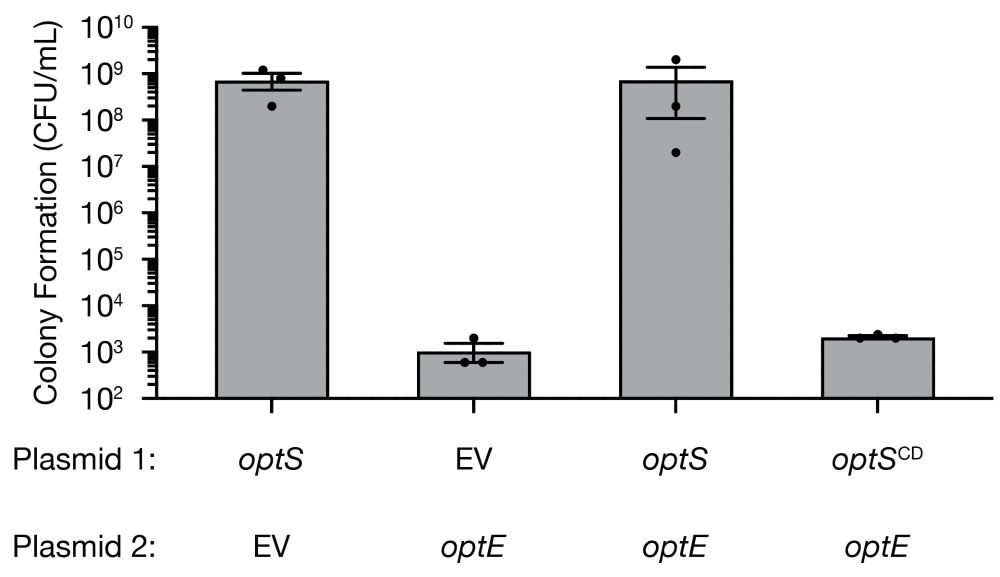
Consistent with this, we found that OptE robustly inhibited bacterial growth unless an OptS-derived nucleotide was present and that OptS constitutively synthesizes 2′,3′-c-di-AMP in vivo in the absence of phage infection.
31.03.2025 22:00 — 👍 1 🔁 0 💬 1 📌 0These data led us to hypothesize that OptS-synthesized nucleotides were actually inhibiting, rather than activating, the OptE effector. Upon phage infection, however, Acb2 sequesters the OptS product away from OptE, unleashing its growth inhibition effect.
31.03.2025 22:00 — 👍 1 🔁 0 💬 1 📌 0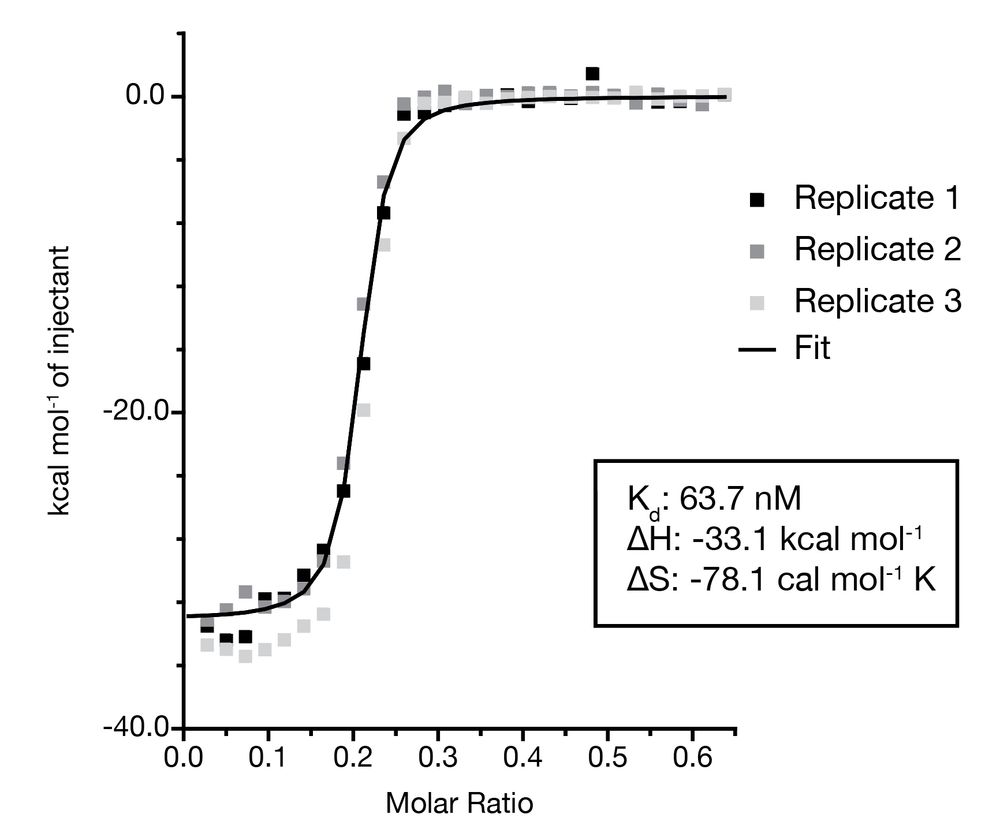
These findings left us puzzled: How does the Acb2 nucleotide sponge protein activate the Panoptes system? Based on its ability to bind diverse nucleotide products, we proposed that Acb2 also binds the product of OptS (2′,3′-c-di-AMP), which is exactly what we found.
31.03.2025 22:00 — 👍 1 🔁 0 💬 1 📌 0Acb2 was recently discovered by the Bondy-Denomy and Chen Labs to be an anti-defense protein that acts as a nucleotide “sponge,” sequestering CBASS-derived cyclic oligonucleotide signaling molecules.
31.03.2025 22:00 — 👍 2 🔁 0 💬 1 📌 0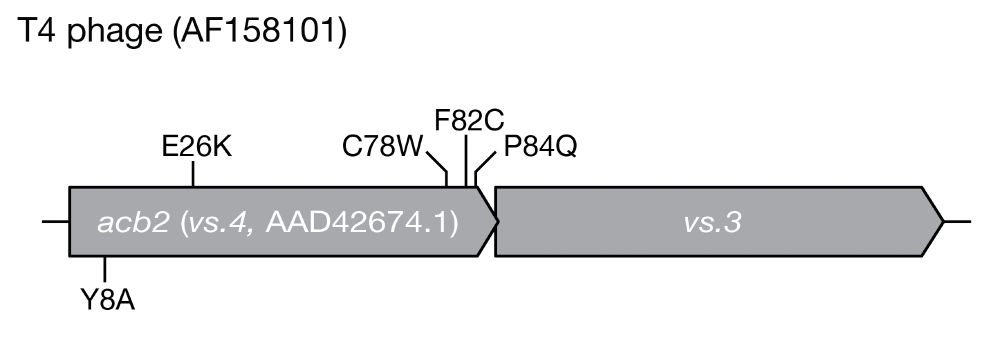
Intriguingly, the escaper phages we identified encoded loss-of-function mutations exclusively in the anti-CBASS 2 (acb2) gene. Consistent with this, we found that acb2 was necessary and sufficient to activate Panoptes defense.
31.03.2025 22:00 — 👍 2 🔁 0 💬 1 📌 0We now knew that nucleotide signaling was a key component of the Panoptes system, but we were left wondering: how does the phage activate defense? To answer this question, we turned to phages that were able to escape Panoptes.
31.03.2025 22:00 — 👍 1 🔁 0 💬 1 📌 0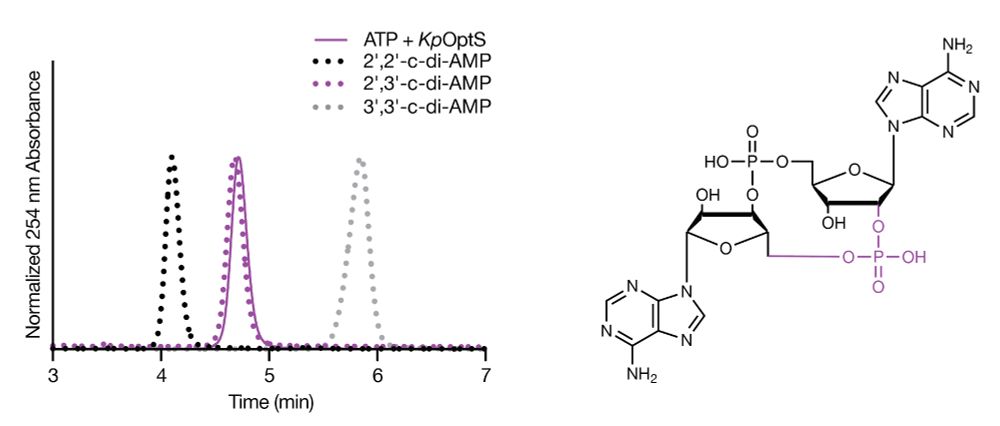
We tested the activity of OptS by incubating it with a range of NTPs and found that it used ATP as a substrate to specifically produce 2′,3′-c-di-AMP, an isomer of c-di-AMP. We used a series of phosphodiesterases to show that the linkage included a 3′–5′ and 2′–5′ bond.
31.03.2025 22:00 — 👍 1 🔁 0 💬 1 📌 0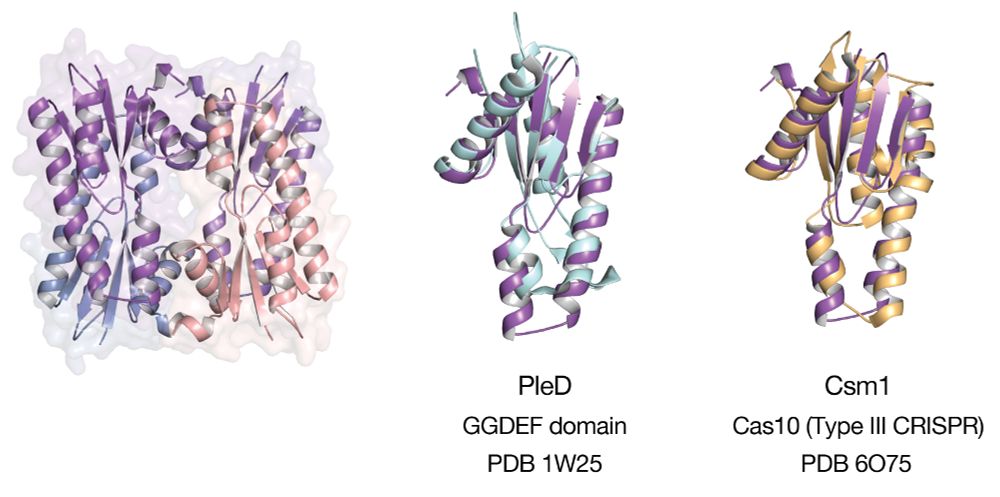
To better understand the mechanism of this system, we determined a crystal structure of OptS and found that it resembled the catalytic regions of both Cas10 and GGDEF enzymes and formed a stable tetrameric complex.
31.03.2025 22:00 — 👍 1 🔁 0 💬 1 📌 0
We first explored the antiphage activity of Panoptes and found that it robustly and specifically defended against Teven phages from the Straboviridae family.
31.03.2025 22:00 — 👍 2 🔁 0 💬 1 📌 0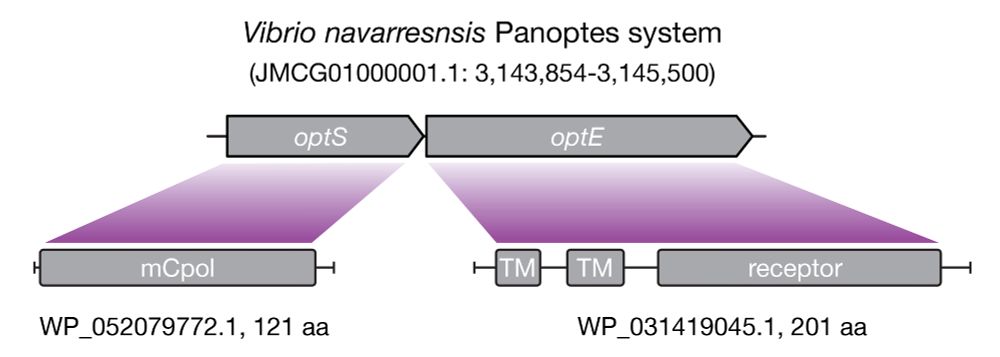
Nucleotide-based signaling is a hallmark of many antiphage systems (CBASS, Pycsar, Thoeris, etc.). Here we investigated Panoptes, a two-gene operon (optSE) that we predicted would similarly use nucleotide second messengers to carry out an immune response.
31.03.2025 22:00 — 👍 1 🔁 0 💬 1 📌 0
Excited to share that my work from the @aaronwhiteley.bsky.social lab is now on bioRxiv! With @benmorehouse.bsky.social, we discovered that the Panoptes defense system—named after the all-seeing watchman of Hera—uses decoy nucleotides to detect phage anti-defense proteins.
31.03.2025 22:00 — 👍 28 🔁 14 💬 2 📌 8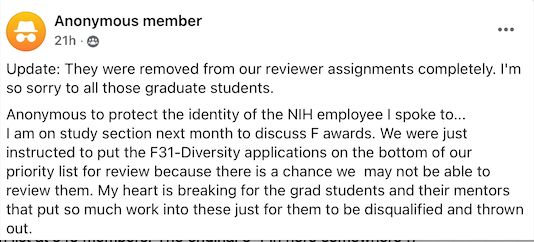
Update: They were removed from our reviewer assignments completely. I'm so sorry to all those graduate students. Anonymous to protect the identity of the NIH employee I spoke to...I am on study section next month to discuss F awards. We were just instructed to put the F31-Diversity applications on the bottom of our priority list for review because there is a chance we may not be able to review them. My heart is breaking for the grad students and their mentors that put so much work into these just for them to be disqualified and thrown out.
Just in case you thought that removing DEI criteria would mean that everyone is competing equally: NIH is removing grad students from underrepresented backgrounds from the applicant pool altogether. Their applications will not be considered. Other students, not from these backgrounds, will be.
06.02.2025 19:59 — 👍 5447 🔁 2878 💬 164 📌 361